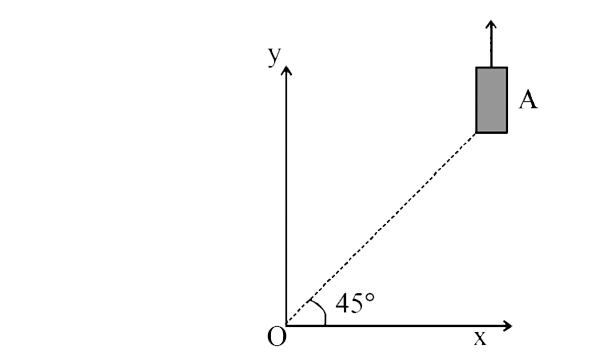A body falls from a height H. Its velocity (v)-distance (x) graph is




The correct Answer is:A
Topper's Solved these Questions
- MOTIONBOOK - MCGROW HILL PUBLICATIONCHAPTER - MOTIONEXERCISE - HIGHER ORDER THINKING QUESTIONS
48 Videos
- MISCELLANEOUS QUESTIONSBOOK - MCGROW HILL PUBLICATIONCHAPTER - MISCELLANEOUS QUESTIONSEXERCISE - PART-B
99 Videos
- REFLECTION OF LIGHT BOOK - MCGROW HILL PUBLICATIONCHAPTER - REFLECTION OF LIGHT EXERCISE - HIGHER ORDER THINKING QUESTIONS
10 Videos
Similar Questions
Knowledge Check
A body is dropped from rest from a height h. It covers a distance 9h25 in the last seconds of fall. The height h is : (use g=9.8m/sec2 )
A102.5mB112.5mC122.5mD132.5mA body is falling from a height h. After it has fallen a height h2, it will possess
Aonly potential energyBonly kinetic energyChalf potential and half kinetic energyDmore kinetic and less potential energyA body is falling from a height h. After it has fallen a height h2, it will possess
Aonly potential energyBonly kinetic energyChalf potential and half kinetic energyDmore kinetic and less potential energy
A body falling from rest has a velocity v after it fallsthrough a distance h .The distance it has to fall down further,for its velocity to become double,is ......... times h (1) "5h," (2) "h," (3) "2h," (4) "3h]]
View SolutionA body freely falling from the rest has velocity v after it falls through a height h the distance it has to fall down for its velocity to become double is
View SolutionOn a frictionless horizontal surface , assumed to be the x−y plane , a small trolley A is moving along a straight line parallel to the y−axis ( see figure) with a constant velocity of (√3−1)m/s . At a particular instant , when the line OA makes an angle of 45(∘) with the x− axis , a ball is thrown along the surface from the origin O. Its velocity makes an angle ϕ with the x− axis and it hits the trolley .
(a) The motion of the ball is observed from the frame of the trolley . Calculate the angle θ made by the velocity vector of the ball with the x−axis in this frame .
(b) Find the speed of the ball with respect to the surface , if ϕ=(4θ)/(3).

View SolutionA body freely falling from rest has a velocity V after it falls through a height H. The distance it has to fall down further for its velocity to become double is
View SolutionA body freely falling from the rest has velocity v after it falls through a height h the distance it has to fall down for its velocity to become double is
View Solution
